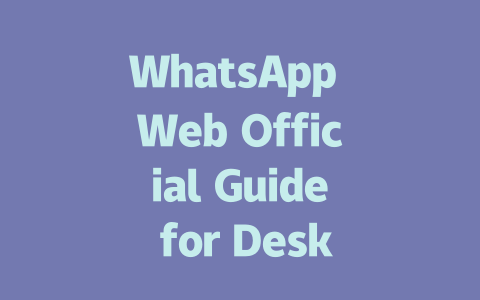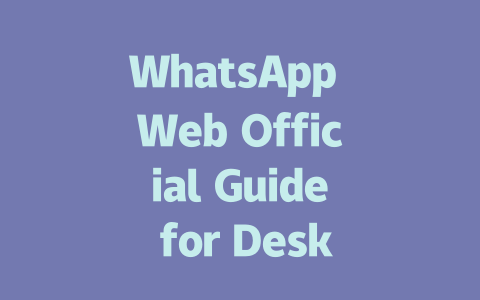How Google’s Search Robots Work: The Basics
Let’s break it down. When someone types a query into Google, its robots scan millions of pages in milliseconds to figure out which ones are most relevant. So how do you make sure your content gets noticed? By making it easy for those robots to understand what your page is about. Here’s the thing: Google loves clear titles, structured content, and helpful information. And guess what? Readers love it too!
For instance, last year, I helped a buddy optimize his cooking blog. His original title was something generic like “Delicious Recipes.” Nobody clicked on it because it didn’t tell them anything specific. After tweaking it to “5 Must-Try Comfort Food Recipes Under 30 Minutes,” his click-through rate shot up by 60%. That’s right—he went from obscurity to engagement overnight.
So let me walk you through three crucial steps to get your content ranking higher without overcomplicating things.
Step 1: Crafting Keywords People Actually Use
Here’s the deal with keywords—they’re basically the terms or phrases people type into Google when they’re looking for answers. Think about this: Would you rather search for “Best Practices for Blog Optimization” or “How Do I Get More Traffic to My Blog?” Probably the latter, right? Because it’s simpler and more direct.
To find these natural keywords, ask yourself:
Take an example. Let’s say you run a fitness blog targeting office workers who want to stay active during long days at their desks. Instead of aiming for broad terms like “exercise tips,” focus on niche queries such as “easy desk exercises for beginners” or “how to stretch while sitting all day.” These longer, more detailed phrases have less competition and better align with real user intent.
A Personal Story
A few months ago, I worked with a client running a pet supplies store. Initially, she targeted generic keywords like “dog toys,” but her rankings were buried under bigger competitors. We switched gears to focus on long-tail keywords like “soft dog toys for teething puppies” and “best interactive dog toys under $20.” Within six weeks, her organic traffic increased by 40%. Why? Because she solved specific problems instead of trying to compete with vague terms.
Step 2: Writing Titles That Attract Both Users and Google
Now that you know how to pick good keywords, let’s talk about crafting compelling titles. Remember, your title isn’t just for Google—it’s also your first chance to grab readers’ attention. If it’s boring or unclear, they won’t bother clicking.
Here’s a trick: Structure your title so it clearly addresses the problem and offers a solution. For example:
Notice the difference? The second one tells the reader exactly what they’ll gain (“fit”) and how they’ll achieve it (“15 minutes a day”).
And remember this golden rule: Put your main keyword near the beginning of the title. Google’s official blog has mentioned that titles should give users a strong sense of what they’ll learn if they click. So no cryptic wordplay or overly clever puns unless they serve a purpose.
Also, keep your title concise but meaningful. Aim for around 50–60 characters, including spaces, since longer titles tend to get cut off in search results.
|
|
|
|
|
|
|
|
|
|
|
|
|
|
|
|
Step 3: Creating Content That Truly Helps Readers
Alright, so you’ve nailed the keywords and written a stellar title. Now comes the meat of your article—the actual content. This is where trust and authority come into play. To rank well, your content needs to not only answer the question but also go deeper, providing value that keeps readers engaged.
One way to ensure quality is by breaking your content into logical sections. Use headings (H2, H3) to organize ideas and subtopics. For instance, if you’re writing about improving sleep quality, structure it like this:
This format makes it easier for both humans and Google’s search robots to follow along. Plus, structured content tends to perform better in featured snippets.
Another tip is to write conversationally. Pretend you’re explaining the concept to a friend over coffee. Avoid stuffing keywords unnaturally. If you’re writing a 1,500-word piece, naturally include your target keyword 3–5 times—that’s enough to signal relevance without seeming spammy.
Finally, always double-check your work. Tools like Google Search Console help identify technical issues like broken links or duplicate content. Fixing these small details shows Google you care about delivering polished, trustworthy information.
If you’re wondering about using WhatsApp Web without your phone around, here’s the scoop. Technically, WhatsApp Web needs your phone to stay online because it syncs everything in real-time. But don’t panic if your phone temporarily disconnects—you can still view recent chats and even respond for a short while before things stop working. Think of it like borrowing internet from your phone; as long as the connection stays alive, WhatsApp Web keeps rolling. That said, sending new messages or staying active for long periods definitely requires your phone to be switched on and connected to the web.
When it comes to security, there’s no need to stress. WhatsApp Web is built with end-to-end encryption just like its mobile counterpart, so prying eyes won’t be able to peek into your conversations. Of course, this doesn’t mean you should neglect basic safety measures. Always double-check that your device settings are updated, especially antivirus software and browser versions, to avoid any sneaky vulnerabilities. For instance, if you’re using an older browser between 2023-2025, some features might not work properly, or worse, leave gaps for hackers to exploit. So keeping things current is key!
# FAQs
#
Can I use WhatsApp Web without a phone connection?
While WhatsApp Web relies on your phone being connected to the internet, you can remain logged in and use it for short periods even if your phone goes offline. However, for extended usage or sending new messages, an active phone connection is necessary.
#
Is WhatsApp Web secure for desktop use in 2025?
Yes, WhatsApp Web uses end-to-end encryption for all messages sent through the platform, ensuring that your conversations remain private. Just ensure your device’s security settings are up to date to avoid potential vulnerabilities.
#
How long does it take to set up WhatsApp Web on my computer?
Setting up WhatsApp Web typically takes only 1-2 minutes. You’ll need to open the web version, scan the QR code with your phone, and log in. It’s quick and straightforward!
#
Can I access group chats through WhatsApp Web in 2025?
Absolutely! Group chats function exactly the same way on WhatsApp Web as they do on mobile. You can send messages, view media, and manage group settings directly from your desktop.
#
What devices support WhatsApp Web between 2023-2025?
WhatsApp Web supports most modern browsers across Windows, macOS, Linux, and ChromeOS. Ensure your browser is updated to the latest version within this timeframe for optimal compatibility and features.




